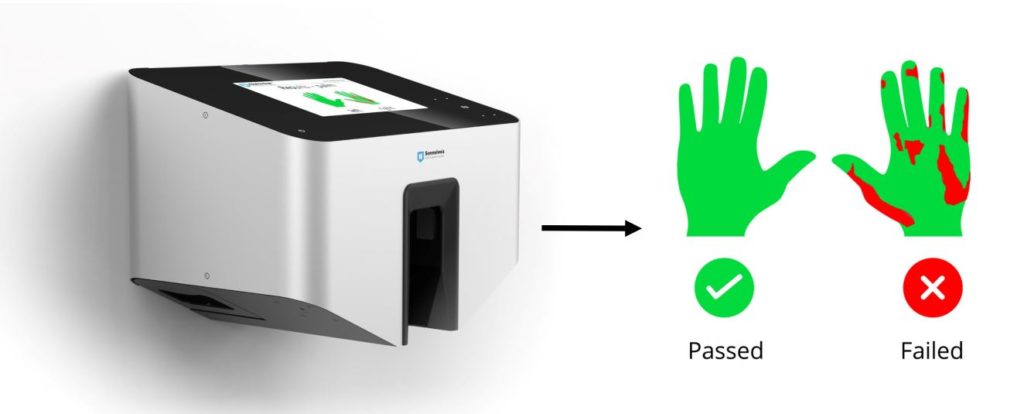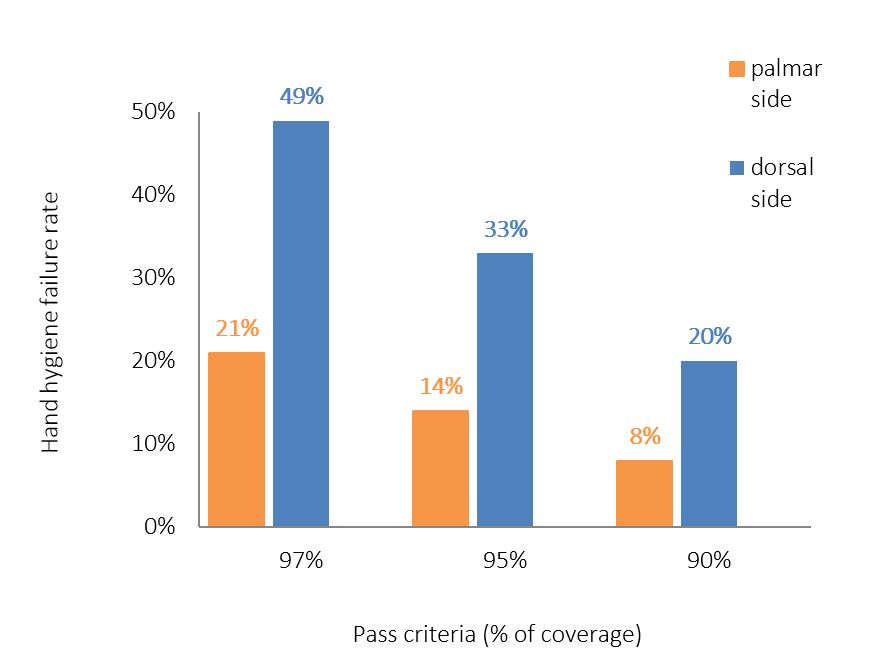We already know how we should hand rub and when we should perform hand hygiene, but under what conditions can the hand hygiene event be considered successful? We focused on this during the following study, aiming to identify optimal pass-fail criteria for hand hygiene technique. Hand hygiene only works when 100% coverage of the hands is achieved. These all pose significant challenges to the clinical care, and particularly regarding technique, it is extremely hard to properly cover the entire hand surface.

We tried different pass-fail criteria regarding coverage, figuring out which would be the optimal for user feedback, since unrealistic high expectations may induce a psychological resistance.
A complex hand hygiene monitoring program was completed at the Albert Szent-Györgyi Health Center. The participants (both visitors and HCW) monitored their own hand hygiene performance with the Semmelweis System, our software-based hand hygiene system.
Evaluation of hand hygiene by the Semmelweis Scanner.
1648 hand hygiene events were recorded in total. All records were analyzed in three different ways: hand hygiene event was considered sufficient if at least 97%, 95% or 90% of the hands’ surface was covered. HCW could provide their feelings regarding the results.
Communicating a single PASS/FAIL result is a general expectation, yet no one likes to fail. Increasing expectations (higher threshold) resulted in a dramatic drop in success rate. On the palmar side, according to different pass-fail settings, 20.81%, 13.4% and 7.83% of the participants failed to achieve sufficient coverage with 97%, 95% or 90% criterion, respectively. Failure rates were significantly higher on the dorsal side (49.03%, 32.95%, and 19.66%, respectively). Only 15.7% (259 events) achieved a complete, 100.00% coverage.
Conclusion:
Setting the hand hygiene requirement to 100.00% (which is the inherent requirement of the guidelines) coverage may be overambitious for many hospitals. It is important to respect the users’ physiological reaction to an IPC intervention. Frequent failure may make the HCW disappointed and undermotivated, and lead to the denial of the monitoring effort and programs. Visitors better respect these training tools.
Read more on Electronic Compliance Monitoring (ECM) Systems and actual clinical settings where ECM systems were applied.

